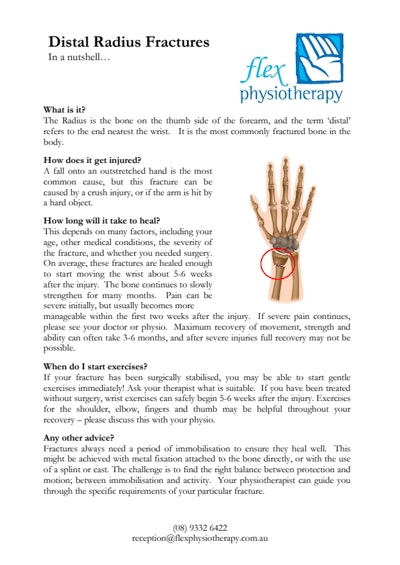Distal radius fractures
In a nutshell...
What is it?
The Radius is the bone on the thumb side of the forearm, and the term 'distal' refers to the end nearest the wrist. It is the most commonly fractured bone in the body.
How does it get injured?
A fall onto an outstretched hand is the most common cause, but this fracture can be caused by a crush injury, or if the arm is hit by a hard object.
How long will it take to heal?
This depends on many factors, including your
age, other medical conditions, the severity of
the fracture, and whether you needed surgery.
On average, these fractures are healed enough
to start moving the wrist about 5-6 weeks
after the injury. The bone continues to slowly
strengthen for many months.
Pain can be severe initially, but usually becomes more manageable within the first two weeks after the injury. If severe pain continues, please see your doctor or physio. Maximum recovery of movement, strength and ability can often take 3-6 months, and after severe injuries full recovery may not be possible.
When do I start exercises?
If your fracture has been surgically stabilised, you may be able to start gentle exercises immediately! Ask your therapist what is suitable. If you have been treated without surgery, wrist exercises can safely begin 5-6 weeks after the injury. Exercises for the shoulder, elbow, fingers and thumb may be helpful throughout your recovery – please discuss this with your physio.
Any other advice?
Fractures always need a period of immobilisation to ensure they heal well. This might be achieved with metal fixation attached to the bone directly, or with the use of a splint or cast. The challenge is to find the right balance between protection and motion; between immobilisation and activity.
Your physiotherapist can guide you through the specific requirements of your particular fracture.
